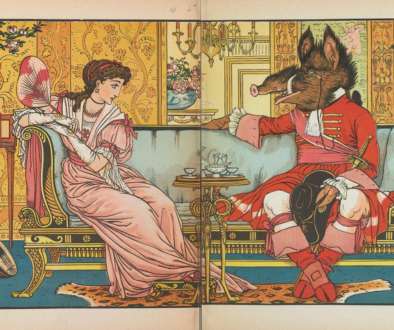Victorian Etiquette and “The Dancing Master”
 So, I have a story in the out-now anthology Willful Impropriety (Wilful Impropriety for those who live outside the US and/or hate excessive “L”s).
So, I have a story in the out-now anthology Willful Impropriety (Wilful Impropriety for those who live outside the US and/or hate excessive “L”s).
“The Dancing Master” is about Leah, the dancing master her parents hire for her, the cousin the family invites for her, the paid companion who Leah idolizes, and what happens after. (Spoilers: pining, sadness, kindness, rebellion, and the Mazurka.)
But it’s also a story about the constraints of Victorian etiquette, because it is out of control. It’s almost hilarious reading through etiquette manuals, in all their specificity and emphasis, right up until you realize that this was, in fact, internalized code designed to create and perfect a rigid class system, entangle women in a microcosm of concerns to keep them from activism in the public sphere, and demonstrably “elevate” the Victorian above the people they were colonizing and repressing, who did unforgivable and “vulgar” things like eating with their fingers or speaking vociferously. Then it’s less funny. (I wrote about them in a much darker story, The Burmese Tailor, a few years back. All of this will still be funnier than that.)
Reading Routledge’s Manual of Etiquette (1875 edition) or the 1891 Manners, Culture, and Dress of the Best American Society by Richard Wells is a study. First, what did or did not change in the intervening years is fascinating. Second, there is a lot of shade being thrown. The points on which they agree are many and sometimes surprising, but there’s nothing Routledge hated more than American Manners, and Wells couldn’t wait for those fusty Brits and their indiscriminate arm-taking promenading to just stop it already.
Third, the sheer scope of it. While it clearly bred panic attacks and quiet desperation in those who had to abide by it, the idea of never again being in a situation where you’re at a loss has an obvious appeal, and there is something hypnotic about some of the details. My favorite might be the rule on pear-cutting (not a euphemism) in the dinner-party section:
PARING FRUIT FOR A LADY. Never pare an apple or a pear for a lady unless she desire you, and then be careful to use your fork to hold it; you may sometimes offer to divide a very large pear with or for a person.
But wait!
DIPPING BREAD INTO PRESERVES. It is considered vulgar to dip a piece of bread into the preserves or gravy upon your plate and then bite it. If you desire to eat them together, it is much better to break the bread in small pieces, and convey these to your mouth with your fork. – Wells (1891)
It’s amazing they ever managed to colonize and disenfranchise anybody, given that they spent approximately 18 hours a day cutting food into pieces!
Men get sections on reading to improve the mind, while ladies get instructions on how to visit your friends for fifteen to thirty minutes only, between the hours of two and four, in the outfit you put on just to do that.
If other visitors are announced, and you have already remained as long as courtesy requires, wait till they are seated, and then rise from your chair, take leave of your hostess, and bow politely to the newly arrived guests. You will, perhaps, be urged to remain, but, having once risen, it is best to go. There is always a certain air of gaucherie in resuming your seat and repeating the ceremony of leave-taking…
You need not advance to receive visitors when announced, unless they are persons to whom you are desirous of testifying particular attention. It is sufficient if a lady rises to receive her visitors, moves forward a single step to shake hands with them, and remains standing till they are seated. – Routledge
Enjoy your equally paralyzing necessary-reciprocation visit! Remember it’s gauche to just fold a corner of your card down if you know she has female relatives visiting, you have to leave a card for every female relative, and it’s gauche to ask how many there are, also don’t worry about holding property or voting okay ON TO BONNETS.
Then there are the ones whose importance is implied and one can only conjecture why:
If a lady has been making purchases during her walk, she may permit the gentleman who accompanies her to carry any small, parcel that she may have in her own hand; but she should not burden him with more than one under any circumstances whatever. – Routledge
I’m guessing this is because a gentleman carrying more than one thing looks Way Too Servanty and we can’t have that? Is it because he has to keep one arm open for another lady in case one should toddle past, trying to respirate in whatever portion of her lungs is still functioning inside her corset? Because that lady might need an arm posthaste.
Maybe they’re just too busy coming up with considerate conversation!
Never lower the intellectual standard of your conversation in addressing ladies. Pay them the compliment of seeming to consider them capable of an equal understanding with gentlemen. − Wells (1891)
Makes me want to laugh until I vote!
Though even assuming gentlemen spoke as if you could understand grown-up words, a lady’s concerns were definitely meant to be elsewhere. Among the domestic arts, dress was arguably the premiere. For a taste of the impossibility of being a Victorian lady and not losing your shit, here is part of (not all of) an excerpt about shawls.
Every servant girl, every maid of all work, has her Sunday cloak. None but the rich can sport an Indian shawl. It requires falling shoulders and a tall and graceful figure. It …should have the appearance of being loosely put on; neither fastened tightly on, nor falling off. Square shawls are always more ugly than not. If the wearer has not a very erect carriage, and if her shoulders are not well thrown back, the chances are that the effect of a square shawl will be anything but pleasing. If the lady stoops, or is at all round-shouldered, the shawl will have the effect of a window that has been cracked by a stone–it will look starred–it will not be smooth and even, but will present the appearance of lines radiating from the defective shoulders. For grace there is nothing like a scarf shawl, but only a few can, or know how to, wear it. – Routledge
Oh! so, so many issues wrapped around what had better be some pristine fucking shoulders.
Of course, in “The Dancing Master,” Leah’s concerns are for the ballroom, and there are hundreds upon hundreds of things specifically for the ballroom that needed worrying about. Some of them even make it into the story. One of Wells’s warnings, in particular, becomes relevant to Leah:
A lady cannot refuse the invitation of a gentleman to dance, unless she has already accepted that of another, for she would be guilty of an incivility which might occasion trouble.
I can’t say more, except that Willful Impropriety is out now if you’re curious, and if I write more about Leah (which I would love to), she is going to be shawl-free, because holy hell, seriously.



